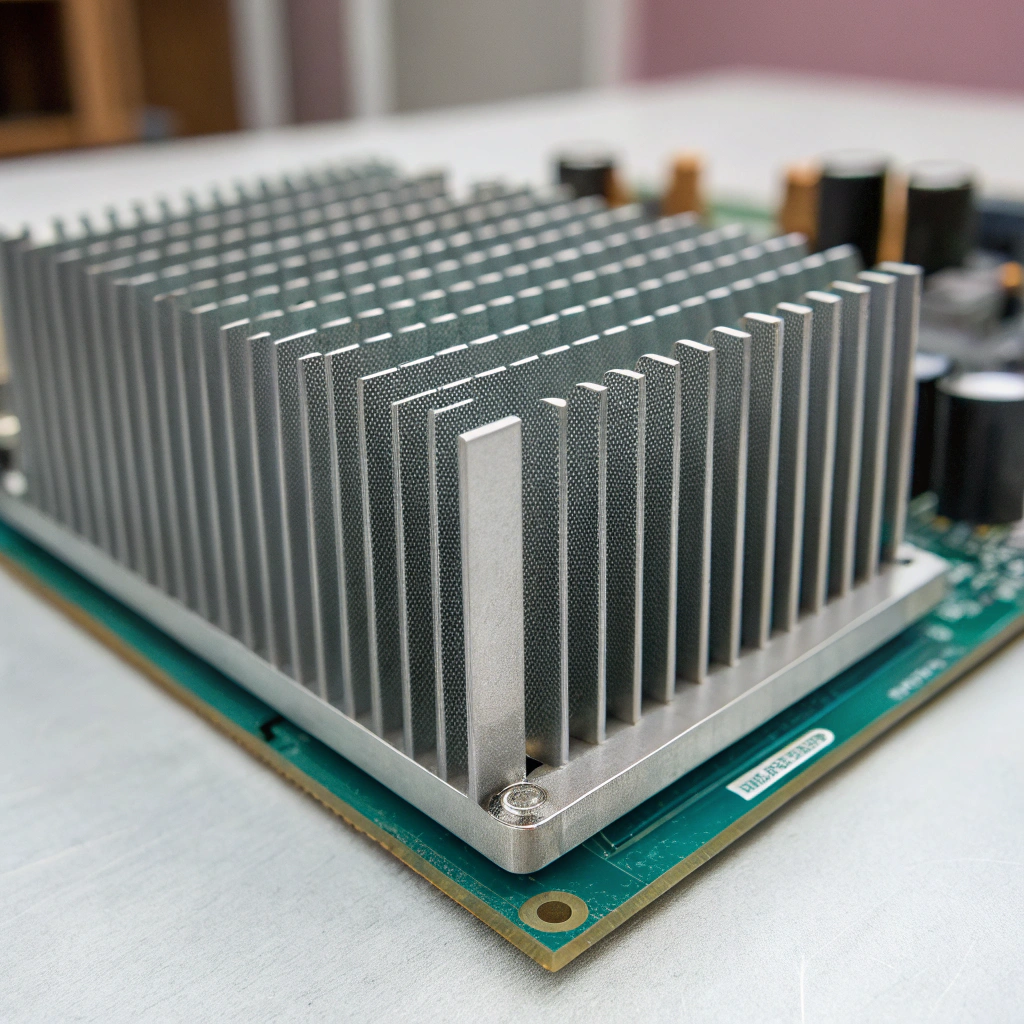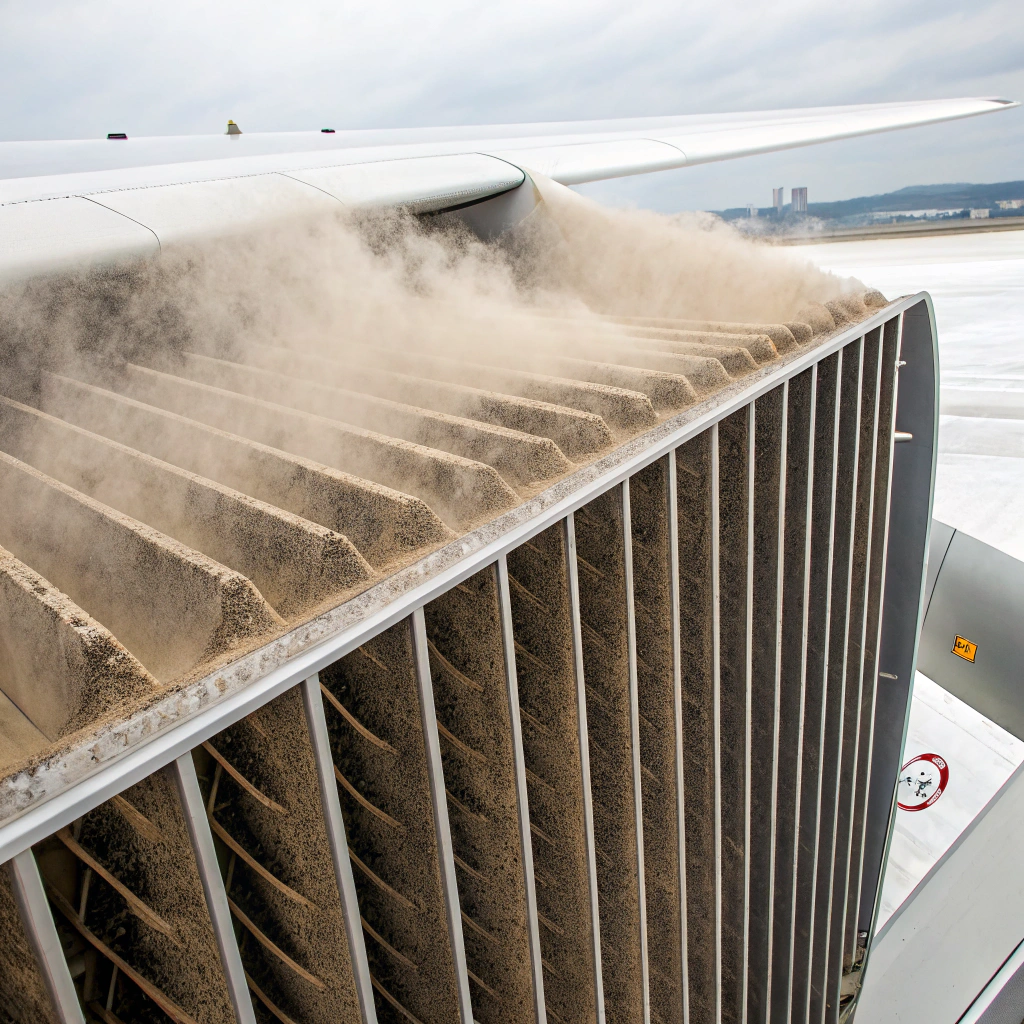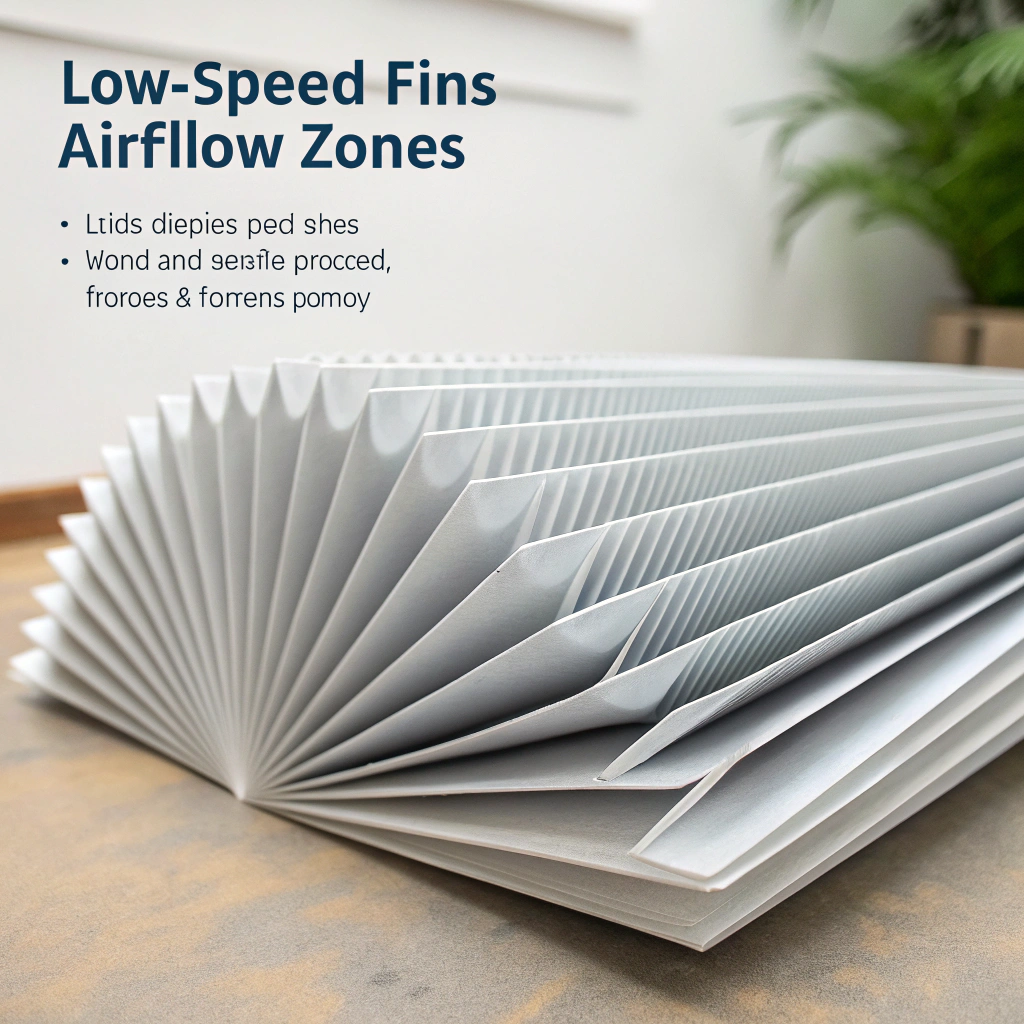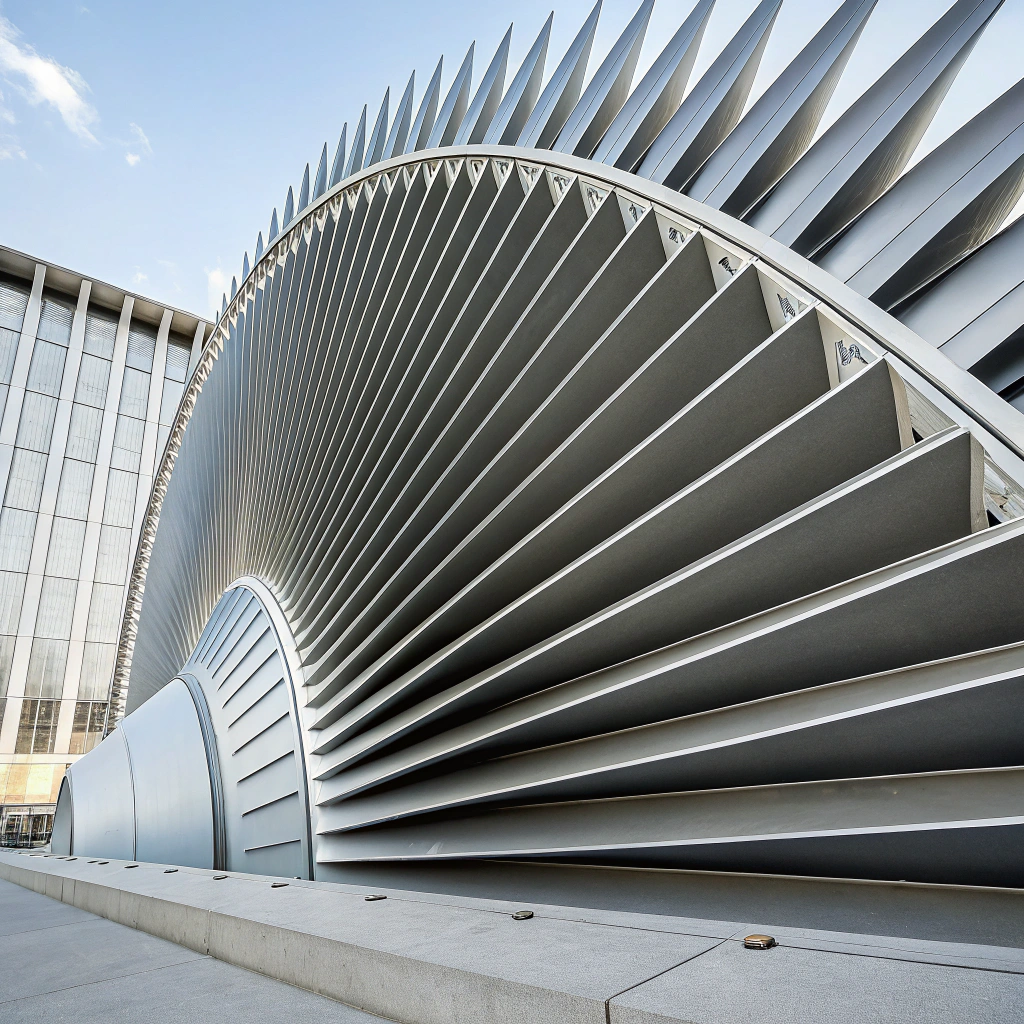What are the minimum fin thickness and spacing possible?
Have you ever tried to improve cooling by cramming more fins into your heat sink? It’s a tempting idea—but there’s a physical limit to how thin or close those fins can be.
The minimum fin thickness for extruded aluminum is typically around 0.8 mm, and the closest standard fin spacing is about 1.5 mm.
But pushing the boundaries of fin size and spacing isn’t just about geometry—it impacts cost, manufacturability, and thermal performance. Let’s look into how all these factors connect.
How does fin spacing affect cooling performance?
It seems logical: more fins mean more surface area, so more cooling, right? Not always. If air can’t flow between the fins, all that surface area is wasted.
Fin spacing directly affects how air moves through the heat sink. Too tight, and airflow is restricted; too wide, and surface area is lost.
Here’s a simplified breakdown of the relationship:
How Fin Spacing Impacts Cooling
| Fin Spacing | Airflow Behavior | Cooling Result |
|---|---|---|
| <1.0 mm | Restricted airflow | Overheating risk |
| 1.5–3.0 mm | Balanced flow | Optimal for natural or forced air |
| >4.0 mm | Air moves freely | But less surface contact |
Основные соображения
- На сайте natural convection, larger spacing helps air rise between fins.
- На сайте forced convection, tighter spacing can work if airflow is strong.
- Dust buildup is worse with tighter fins, leading to long-term performance drop.
In one of our client projects, we reduced fin spacing from 2.5 mm to 1.2 mm expecting better results. Instead, the unit ran hotter because air got trapped and couldn’t escape efficiently.
Fin spacing that is too tight can restrict airflow and reduce cooling performance.Правда
Air needs space to move through the fins and carry heat away.
The tighter the fin spacing, the better the heat sink will perform in all situations.Ложь
In many cases, overly tight fins trap heat by blocking airflow.
Can custom fin structures be produced on request?
Sometimes your design needs something that off-the-shelf heat sinks can’t offer. Maybe you need curved fins, staggered rows, or extra height.
Yes, most manufacturers can produce custom fin structures, including non-standard thicknesses, shapes, and arrangements.
Types of Custom Fin Structures
| Тип плавника | Описание | Общее использование |
|---|---|---|
| Straight | Uniform fins, standard extrusion | Electronics cooling |
| Штыревые ребра | Round or square posts | Разнонаправленный воздушный поток |
| Расклешенные плавники | Wider at top | Improved airflow in low-speed zones |
| Folded fins | Made from sheets, folded and bonded | High-density compact applications |
Customization Process
- Submit CAD drawing or sketch
- Manufacturer reviews feasibility
- Tooling is prepared for extrusion or machining
- Samples made for fit and airflow testing
What You Need to Know
- Custom fin structures may require tooling fees
- Minimum order quantities are common
- Lead times can be longer for special dies or bonded fins
We helped a client in aerospace design a heat sink with pin-fin layout and variable spacing. It improved cooling by 18% over standard extrusion, though the setup took four weeks and had a custom die cost.
Manufacturers can create custom heat sinks with unique fin structures like pins, flares, or folds.Правда
Custom tooling and designs are available for specialized needs.
Only straight, standard fins are possible when ordering heat sinks.Ложь
Many advanced structures can be produced with the right process and budget.
What limitations exist for ultra-thin aluminum fins?
Thinner fins seem ideal—they save material, allow more fins per area, and reduce weight. But going too thin has downsides.
Ultra-thin fins are limited by manufacturing methods, structural strength, and thermal efficiency trade-offs.
Key Limits of Thin Aluminum Fins
| Фактор | Ограничение | Воздействие |
|---|---|---|
| Extrusion process | Below 0.8 mm is hard to produce cleanly | Fins may warp or break |
| Structural rigidity | Thin fins bend or vibrate easily | May detach or rattle under fan pressure |
| Теплопередача | Less material reduces conduction path | Fins may heat up faster and saturate |
Even with CNC or bonded fin designs, there’s still a trade-off. Thin fins heat up quickly but can also be fragile and prone to clogging by dust.
In one case, a client pushed for 0.5 mm fins in a custom profile. We could only deliver that using bonded fins, which doubled the cost and added complexity to assembly.
Ultra-thin fins below 0.8 mm often require special production methods like bonded fin fabrication.Правда
Standard extrusion cannot reliably create such thin structures.
Thinner fins always improve heat sink performance and lower costs.Ложь
They can be structurally weak, harder to make, and sometimes reduce heat capacity.
Do tighter fins always improve heat dissipation?
It’s easy to assume that more fins = better performance. But that’s only true under the right airflow and thermal load conditions.
Tighter fins can increase surface area, but without enough airflow or spacing, they may reduce heat sink performance.
Why More Isn’t Always Better
| Состояние | Tighter Fins Work? |
|---|---|
| Strong fan airflow | Да |
| Passive cooling | Нет |
| High dust environments | Нет |
| Vertical fin orientation | Иногда |
Other Factors That Matter More
- Fin height and depth also impact surface area
- Material conductivity affects how fast heat spreads
- Fin base contact quality determines heat flow start point
I remember advising a customer not to tighten fin spacing in a passive solar controller design. They insisted on 1.0 mm spacing. Six months later, they had overheating issues in dusty environments and had to switch back to 2.5 mm spacing.
Tighter fin spacing improves heat dissipation only if airflow is sufficient and fins do not block each other.Правда
Air must move freely between fins to carry heat away.
Tighter fins always lead to better cooling performance regardless of conditions.Ложь
They can block airflow, especially in passive or dusty environments.
Заключение
Fin spacing, thickness, and structure all work together to define how well a heat sink cools. It’s not just about cramming in more metal—it’s about balancing airflow, surface area, and material limitations. Smarter design always wins over guesswork.








